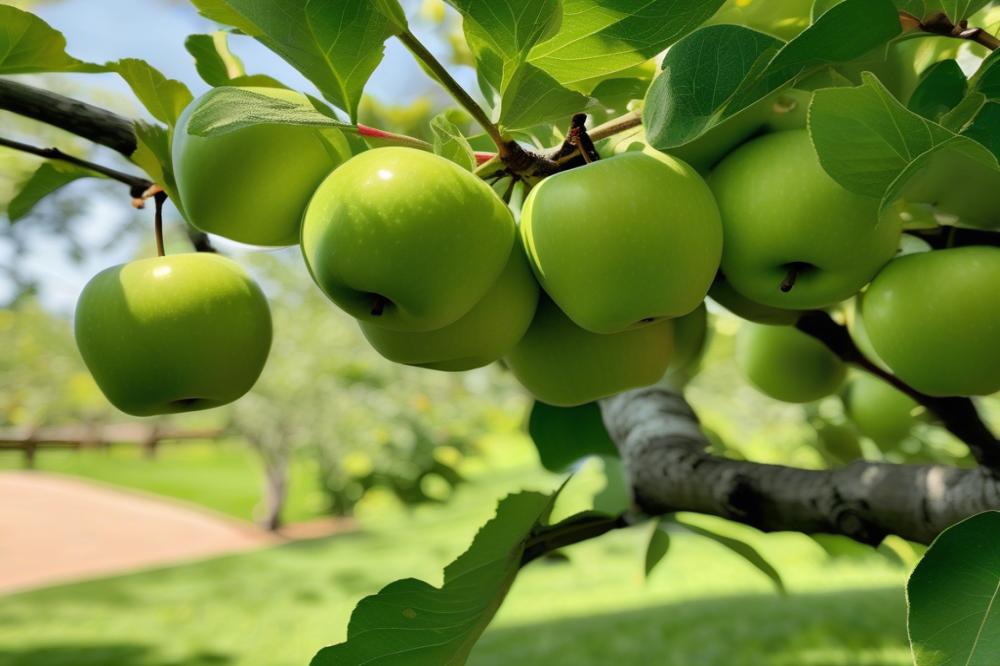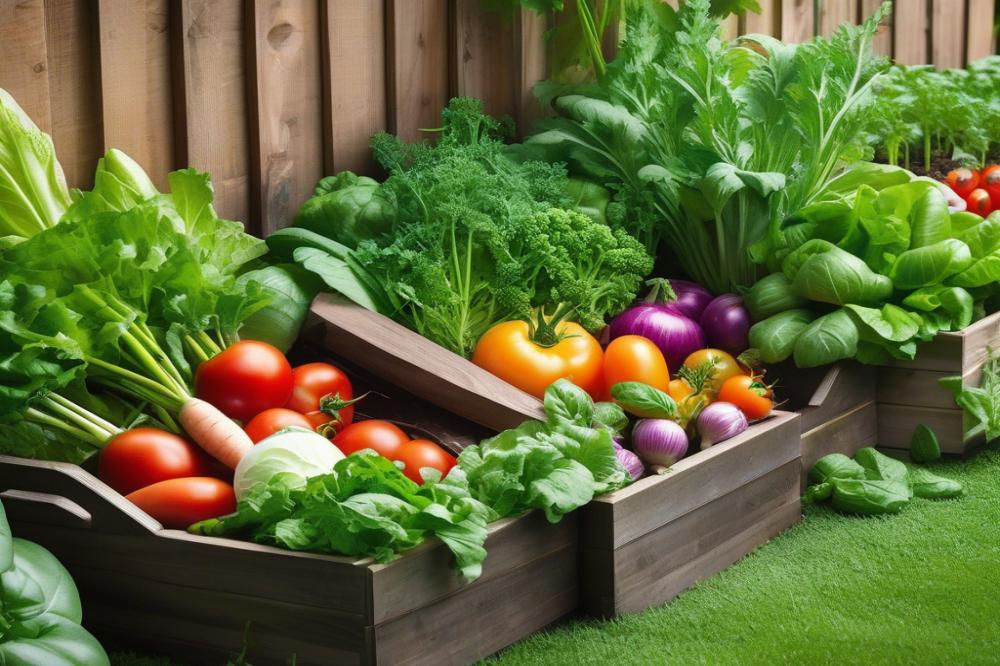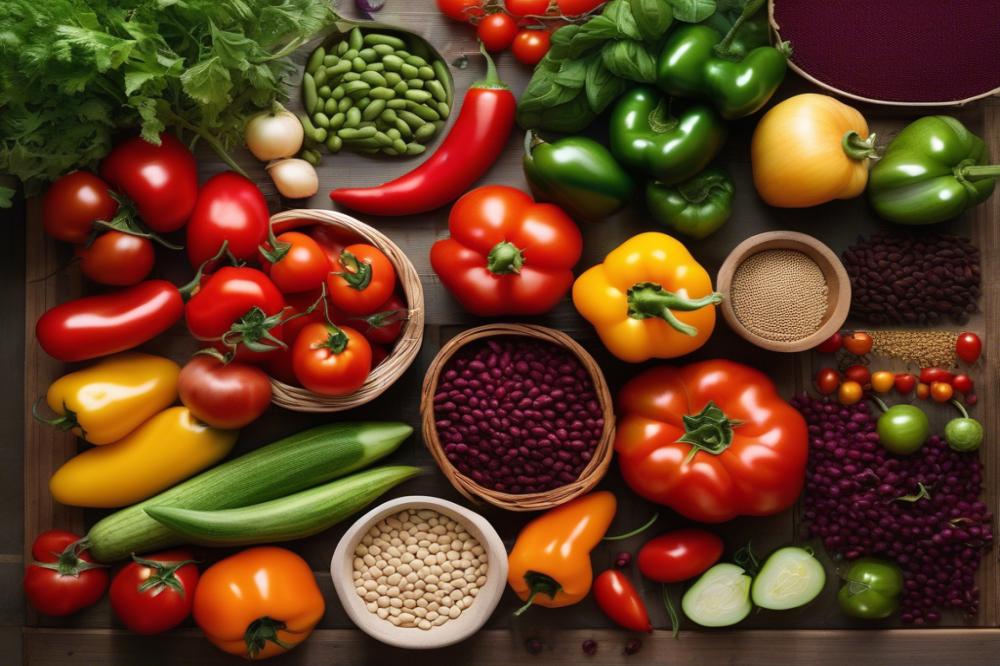Introduction
Granny Smith apples hold a cherished spot in the world of home gardening. Renowned for their vibrant green color and delightful tartness, these fruits are much more than just a treat. They have gained a reputation for versatility in various culinary creations. Whether used in pies, salads, or simply as a refreshing snack, their crisp texture offers something special to every dish.
The history of Granny Smith apples traces back to Australia in the mid-19th century. A gardener named Maria Ann Smith is credited with discovering this remarkable variety. Through years of apple cultivation, her finding became one of the most beloved green apples across the globe. Today, they symbolize not only deliciousness but also resilience in horticulture.
In addition to their culinary appeal, these apples bring important nutritional benefits. They’re packed with vitamins, fiber, and antioxidants. This makes them a wholesome choice for anyone looking to boost their diet. Home gardeners find joy in planting these trees and watching them flourish in their backyards. Caring for an apple orchard can be rewarding, particularly as the harvest season approaches.
Storage plays a crucial role in preserving the crispness and flavor of Granny Smith apples. Proper techniques can maintain their freshness for weeks or even months. With the right conditions, one can enjoy the fruits long after the picking season ends. Recipes utilizing these green beauties continue to delight families, blending tradition with modern culinary trends.
Ultimately, the journey from orchard to kitchen showcases a rich tapestry of flavors and satisfaction. Granny Smith apples remain a timeless choice for gardeners and cooks alike. Their enduring appeal speaks volumes about the simple joys found in nature and food.
history of Granny Smith Apples

The story of the Granny Smith apple begins in Australia during the 1860s. Maria Smith, an enthusiastic gardener, discovered this apple variety by chance. She found a random seedling near her home in New South Wales. The apple, initially believed to be a chance seedling, had bright green skin and a crisp texture. At first, Maria cultivated the apple for her family’s enjoyment. Its tart flavor set it apart from other fruit varieties available at the time.
As the years went by, interest in Maria’s green apples began to grow. Local growers started recognizing the potential of her discovery. The apple’s exceptional flavor appealed to many. Not only was it delicious, but it also had impressive storage qualities. This made it an attractive option for gardening at a larger scale. By the late 19th century, Granny Smith apples were being commercially cultivated in various apple orchards throughout Australia.
The turn of the 20th century saw the fruit gaining even more popularity. Farmers embraced Granny Smith for its unique taste and adaptability. This apple variety became a staple in many gardens around the country. Its use spread to baking and cooking, leading to a variety of recipes. Nutritionists praised the apple for its health benefits. Rich in vitamins and fiber, it became a preferred choice for health-conscious consumers.
Export opportunities began to emerge as well. Australia soon started shipping these delightful apples to other parts of the world. Many countries quickly recognized the high-quality product from down under. By the mid-20th century, Granny Smith had established itself as a leader among apple varieties globally. Its tartness won hearts everywhere, and its bright green appearance made it instantly recognizable.
Throughout the decades, the horticulture of Granny Smith apples evolved. Growers shared techniques to maximize fruit production and improve quality. The apple became synonymous with freshness and quality in markets. Today, this apple stands as not just a symbol of Australian agricultural achievement but also continues to thrive in global popularity.
Horticulture and Cultivation Techniques

Granny Smith apples thrive under specific growing conditions. These green apples prefer well-drained soil, ideally sandy loam, that enriches their crisp texture. pH levels should be slightly acidic, ranging from 6.0 to 6.8. This helps with nutrient absorption. Mulching can also improve soil health while preventing weeds.
When it comes to sunlight, these fruit varieties flourish in full sun. A minimum of six hours of direct sunlight each day promotes fruit development and enhances the apple’s flavor. Water is similarly crucial; young trees require consistent moisture to foster strong root systems. However, overwatering can lead to root rot, so gardeners must find a balance.
Planting Granny Smith apple trees involves careful planning. It is best to space them at least 15 to 20 feet apart. This spacing encourages airflow and reduces the chance of disease. Digging a hole slightly larger than the root ball allows for proper establishment. Timing can also make a difference. Early spring or fall is ideal for planting.
Pruning is essential in maintaining healthy trees. Regular trimming encourages new growth and increases sunlight penetration to the inner branches. Step back to assess the tree’s shape while pruning. Aim for an open center to provide good airflow through the branches. This practice can prevent fungal issues.
Pest management requires vigilance. Some common pests that affect apple orchards include aphids and codling moths. Organic methods, such as introducing beneficial insects, can help. Additionally, using neem oil is a popular choice among gardeners. This natural remedy combats various pests without harming beneficial insects.
In terms of nutrition, Granny Smith apples are high in dietary fiber and vitamin C. Their tartness makes them a favorite in recipes for pies and salads. Furthermore, proper storage extends their shelf life. Keeping them cool and in a dark place helps maintain freshness.
Understanding these horticultural techniques enriches the gardening experience. Successful cultivation of this esteemed apple adds flavor to dishes and delights taste buds. The history of the Granny Smith, rooted in Australia, is a testament to its lasting appeal. Embracing these cultivation practices allows more gardeners to enjoy the fruits of their labor.
Fruit Varieties and Characteristics

When it comes to apple varieties, Granny Smith stands out among green apples. Originating from Australia, these apples were discovered by Maria Ann Smith in the 19th century. They possess a bright green skin that appeals to many gardeners and fruit enthusiasts.
In comparison to other apple types, they are often crisper and more acidic. This contrasts specifically with sweeter varieties like Fuji or Gala. The texture is firm, making them excellent for baking. Most people enjoy their tartness, especially in recipes where balance is key.
Size, on average, can range from medium to large. A typical Granny Smith apple measures around three inches in diameter. Their vibrant color and smooth skin make them visually striking in apple orchards and markets alike. Many consumers appreciate this aesthetic appeal.
Harvest and Ripening
Timing is crucial in the harvest of these apples. They are typically ready for picking in late September to early October. Observing the skin color can help determine readiness. Once picked, these apples can continue to ripen off the tree but should be monitored to avoid overripening.
Storage is quite straightforward, too. These apples can last several months if kept in a cool, dry place. Their durability makes them popular among both growers and consumers.
Nutritionally, they are an excellent choice. High in fiber and vitamin C, they contribute positively to a healthy diet. Adding them to salads or as a fresh snack can boost nutrient intake. Their acidic flavor also enhances various recipes, especially in dishes that require a tart element.
Gardening enthusiasts often find growing them rewarding. The vibrant green apples look fantastic on trees during the growing season. Observing the fruit develop can be inspiring, especially when they are ready for harvest.
Nutritional Benefits of Granny Smith Apples
Eating Granny Smith apples offers numerous health advantages. These green apples are not just delicious; they also pack a nutritional punch. A single medium apple contains about 95 calories, making it a great snack choice for anyone. Additionally, they are rich in fiber, which promotes healthy digestion and can help in weight management.
Vitamins are another highlight of these fruits. They contain vitamin C, which supports the immune system and aids in repairing tissues. There are also smaller amounts of other vitamins like vitamin A and several B vitamins. When grown in orchards, the right conditions can enhance their nutritional profile.
Incorporating green apples into everyday meals is simple. They can be enjoyed raw, sliced into salads, or baked into pies. Recipes featuring these fruits often highlight their crisp texture and tart flavor. Families can easily include them in a balanced diet.
Regular consumption of apples can contribute to overall health. Research indicates that eating fruit varieties like these may lower the risk of chronic diseases. The antioxidants found in many apples help combat free radicals in the body. This feature adds an extra layer of protection against aging and various health issues.
Storage is vital to maintaining the freshness and nutritional value. Keeping apples in a cool, dry place prolongs their shelf life. When caring for them, it’s important to wash before eating to remove any pesticides. Gardening enthusiasts might also enjoy growing their own apples, providing a great way to connect with nature.
With various apple varieties available, it’s worth exploring others alongside Granny Smith. Each type brings distinct flavors and textures. However, the health benefits remain consistent across most apples. This aspect makes them a cherished choice for households across Australia and beyond.
Storage and Preservation
To keep Granny Smith apples fresh, proper storage is key. These green apples thrive in cool, dry conditions. In the kitchen, a countertop is often too warm and humid for long-term storage. Instead, the refrigerator is the best option. Placing apples in a crisper drawer or in a perforated plastic bag can help regulate moisture and air circulation.
Monitoring the apples regularly is wise. Any signs of bruising or rot need to be addressed immediately. One spoiled apple can quickly affect the others, so check for any that look less than perfect. Apples retain their quality when separated from other fruits. Ethylene gas, released by many fruits, can speed up spoilage.
Preservation Techniques
When it comes to preservation, several methods stand out. Canning is a popular choice among gardeners wanting to store their harvest. To can apples, they are typically peeled, sliced, and cooked in a sweet syrup. Jars are filled and sealed for long-term storage. This process locks in nutrients and allows for delicious recipes throughout the year.
Another method is baking. Creating apple pies or crisp not only enhances flavor but also extends shelf life. Cooked apples can be frozen for future use. They make for fantastic desserts or toppings for breakfast dishes. Recipes abound, ensuring that nothing goes to waste.
In Australia, cultivating apple orchards also leads to ways of preserving these fruits. Drying apples is a traditional method. The dried slices can be used for snacking or in recipes. These techniques are rooted in history and horticulture, emphasizing the importance of maintaining fruit varieties.
Nutrition remains a major aspect when considering storage and preservation. Consuming fresh or preserved green apples offers numerous health benefits. Vitamin C, fiber, and antioxidants are just a few positive elements they provide. Therefore, understanding how to safely store and preserve them contributes significantly to overall well-being.
Culinary Uses and Recipes
Granny Smith apples, known for their tartness and crisp texture, serve as a staple in many kitchens. Their bright green color and refreshing flavor make them ideal for both sweet and savory dishes. Whether in pies, salads, or sauces, these green apples bring a vibrant taste to every recipe.
When it comes to baking, apple pie is a time-honored classic. A Granny Smith apple pie features a flaky crust filled with sliced apples mixed with sugar, cinnamon, and a hint of lemon juice. Baking this dessert fills homes with a warm, inviting aroma that reminds many of family gatherings and celebrations.
Salads can also benefit from the sharp flavor of these fruits. Slicing them thinly and adding them to a mixed greens salad adds a delightful crunch. Pairing with walnuts and feta cheese creates a dish that is both nutritious and charming. Drizzling a light vinaigrette over the top enhances the taste without overshadowing the apples.
In addition to pies and salads, these apples work well in sauces. Cooking them down with some brown sugar and spices allows their natural sweetness to emerge. This sauce pairs wonderfully with pork, making for a hearty and flavorful dinner.
Healthy snacks can also be crafted from green apples. Sliced apples with peanut butter make for a quick, nutritious treat. This combination not only satisfies hunger but also provides essential nutrients.
Gardening enthusiasts often explore growing various fruit varieties, including Granny Smith apples, in their own yards. These bushes thrive in well-drained soil and plenty of sunlight. Knowing the right horticulture tips helps in producing juicy, crisp fruit. Storage is equally important. Keeping them in a cool, dry place maximizes their shelf life, maintaining freshness for several weeks.
Exploring these culinary uses showcases the versatility of Granny Smith apples. Each recipe highlights how these green spheres can contribute to nutritious meals, whether it be a crisp salad, a warm pie, or a quick snack. Enjoying these recipes fosters creativity in the kitchen while honoring the rich history of this beloved fruit.
The Role of Apple Orchards in Agriculture
Apple orchards play a significant role in the world of horticulture. These spaces are more than just places where fruits grow. They are vital for developing various fruit varieties that meet consumer demands. Thanks to careful cultivation, apples like Granny Smith became popular globally.
Farming green apples also affects the environment positively. Orchards can improve air quality and support biodiversity. Trees absorb carbon dioxide and provide a habitat for many species. Such ecological benefits are essential in today’s changing climate.
Many apple orchards contribute to local economies. They serve as a source of income for farmers and create jobs. People often seek local produce for its freshness and flavor. Growing apples can lead to markets for homemade products and cider production.
Community orchards offer many advantages too. Sharing gardening space fosters relationships among neighbors. These areas can enhance community spirit and awareness of nutrition. They encourage healthy eating habits while providing easy access to fresh fruit.
In addition to nutritional benefits, apples are versatile in cooking. Many recipes can showcase their flavors and textures. From pies to salads, they offer a range of culinary possibilities. Proper storage ensures that apples remain fresh for an extended period, even after they’re harvested.
Australia’s agricultural landscape has benefitted greatly from these orchards. This country is known for its fruitful contribution to apple cultivation. The focus on sustainable practices in orcharding supports ongoing environmental efforts. As consumers, we should appreciate the hard work behind our favorite fruits.
Final Thoughts on Growing Granny Smith Apples
Granny Smith apples hold a significant place in both home gardening and the culinary world. Their crisp texture and tart flavor make them a favorite in many recipes. Whether in pies, salads, or juices, these apples enhance the taste of countless dishes, adding a refreshing zing. Understanding their history can deepen appreciation for the role they play in our kitchens.
Growing your own apple tree can be rewarding. With ample sunlight and well-drained soil, you could cultivate a tree that produces delicious fruits for years. Imagine stepping outside and picking fresh apples right from your backyard. That kind of connection to food is special. It fosters a sense of accomplishment while promoting a healthy lifestyle.
Sustainable practices also matter in fruit cultivation. Choosing organic methods helps preserve local ecosystems. Reducing chemical usage not only benefits your health but also the environment. Encouraging biodiversity in your garden contributes to a robust horticultural practice. This approach is essential for the future of apple cultivation and agriculture.
Fruits like these connect us to nature. Planting one can spark interest in gardening and a deeper understanding of where our food comes from. Consider starting this journey today and experience the joy of homegrown apples.



